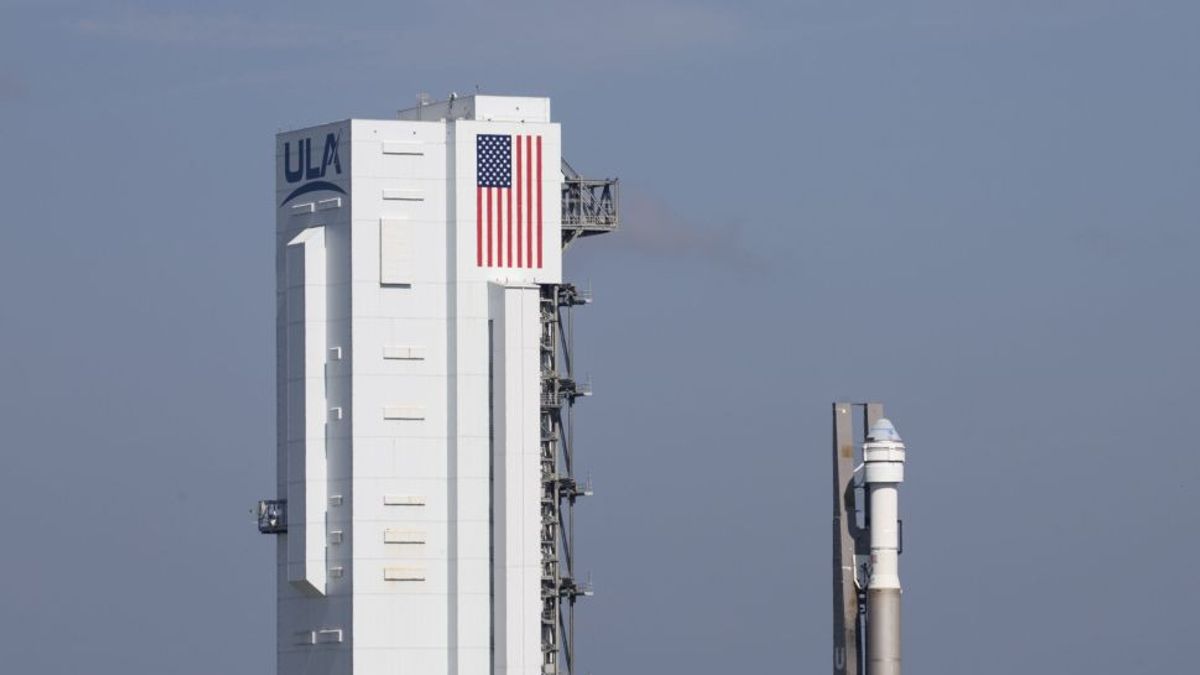JAKARTA - Boeing's Starliner capsule will return to the hangar for further inspection after its failed launch into space Tuesday, August 3. The failure was due to an indication of a problem with a valve in the vehicle's propulsion system.
According to a statement from NASA, the ground team will launch the United Launch Alliance Atlas V rocket back to the Vertical Integration Facility at Launch Complex-41 on the Cape Canaveral Space Station in Florida on Thursday, August 5. The move allows engineers direct access to the Starliner capsule, which officials hope will help them track down the elusive valve problem.
"This team is steadfast in its commitment to identifying root causes and determining next steps," said John Vollmer, vice president and program manager for Boeing's Commercial Crew, in a company statement.
Previously, the Rocket had made a slow journey from the launch pad to the Vertical Integration Facility on Friday 30 July. Starliner had targeted a launch that day on the landmark Orbital Test Flight 2 (OFT-2) mission to the International Space Station.
But the day before launch, and just hours after the Starliner arrived at the launch pad, the team postponed the flight mission until Tuesday 3 August. Given the gap between launch opportunities and threatening weather, the Starliner was finally brought inside for cover again.
The launch delay also occurred due to an incident on the ISS space station. The long-awaited Russian science module, Nauka, had arrived at the orbiting laboratory earlier in the day on July 29. After docking, a software glitch fired the booster of the Nauka module incorrectly, sending the station spinning through space.
NASA and its Russian partner, Roscosmos, ended up solving the complex problem within 45 minutes, but they ultimately decided it was wiser not to send another new vehicle out until the ISS station stabilized.
The next available launch opportunity for the mission was not until Tuesday afternoon. But more than two hours before the scheduled launch, officials announced that the team was pulling back from the effort due to "an unexpected valve position indication" in the Starliner's propulsion system.
Checking and troubleshooting the pad throughout Tuesday and Wednesday, August 4th, couldn't resolve the issue, therefore today's rollback is back to the Vertical Integration Facility.
"Boeing and NASA teams are working methodically to understand what causes valve indications on the Starliner service module propulsion system," Steve Stich, Commercial Crew Program manager, said in an agency statement. "Troubleshooting at the Vertical Integration Facility will help focus on potential causes and next steps before we fly the OFT-2 mission."
NASA is waiting to announce a new target launch date for the mission until Boeing has better findings on what's causing the troubling indicator. However, Starliner needs to slip into a hectic schedule for the International Space Station, which is facing a busy few months.
Next week, Northrop Grumman will launch a cargo delivery to an orbiting laboratory; later this month, SpaceX will follow suit with its own supply. In September, Russian cosmonauts Oleg Novitsky and Pyotr Dubrov will embark on a series of up to 11 spacewalks to complete the setup of the Nauka module, and in October, both Russia and SpaceX will launch manned missions to an orbiting laboratory.
The English, Chinese, Japanese, Arabic, and French versions are automatically generated by the AI. So there may still be inaccuracies in translating, please always see Indonesian as our main language. (system supported by DigitalSiber.id)













